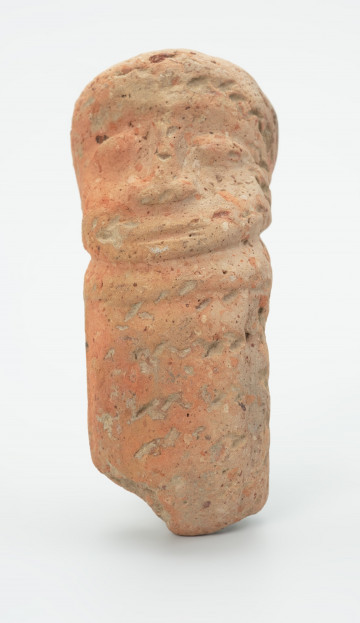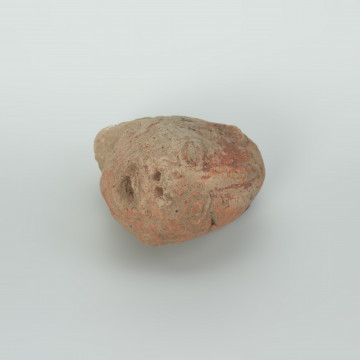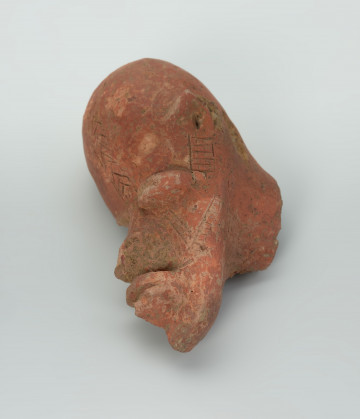
Figure
około 1480
National Museum in Szczecin
Part of the collection: Terracotta from the Niger
The most common carving material used in Africa is wood. Stone is used much less frequently, while the clay is the least frequently used material, from which individual ethnic groups model figurines and other cult objects.The African tradition of firing clay sculptures dates to the first millennium BC, as exemplified by finds from the Nok culture from Central Nigeria or the later terracotta items discovered in the Djenne-Jeno region of modern Mali. The sculptor is usually a blacksmith, often belonging to an endogamous professional caste, working in stone and wood in traditional African communities. The fired clay figures are women's work, usually, one of the blacksmith's wives who specialise in pottery. The presented object shows a human head with a square face and a strongly marked mandible of graphite clay. It is missing one ear, after which only a tiny, round hole remained. The sculpture was probably fired in a reducing atmosphere, which is confirmed by its colour. The purpose of the figurine is not clear. It seems that originally it was connected to religion and rituals. Probably it was placed on a home altar dedicated to ancestors.
Katarzyna Findlik-Gawron
Author / creator
Dimensions
cały obiekt: height: 5,9 cm, width: 3,8 cm
Object type
sculpture
Creation time / dating
Creation / finding place
Identification number
Location / status

około 1480
National Museum in Szczecin

około 1201 — 1985
National Museum in Szczecin

około 1201 — 1985
National Museum in Szczecin
DISCOVER this TOPIC
National Museum in Lublin
DISCOVER this PATH
Educational path